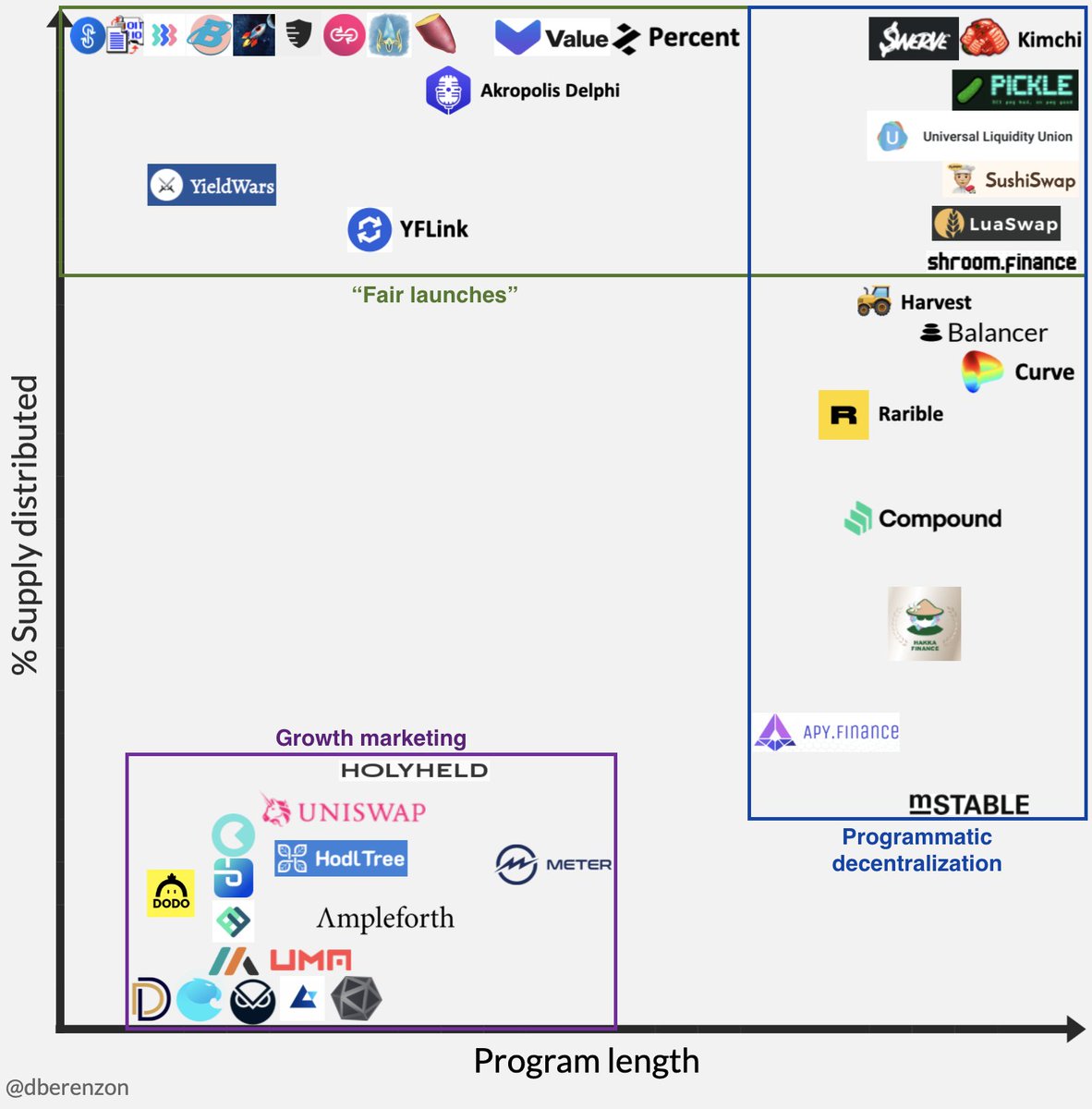1/ The last four months have seen *dozens* of protocols launch liquidity mining programs.
I& #39;ve written a piece explaining what liquidity mining is, what has worked well, and what could be improved: https://medium.com/bollinger-investment-group/liquidity-mining-a-user-centric-token-distribution-strategy-1d05c5174641">https://medium.com/bollinger...
I& #39;ve written a piece explaining what liquidity mining is, what has worked well, and what could be improved: https://medium.com/bollinger-investment-group/liquidity-mining-a-user-centric-token-distribution-strategy-1d05c5174641">https://medium.com/bollinger...
2/ Liquidity mining (LM) is a network participation strategy in which a user provides capital to a protocol in return for that protocol& #39;s native token.
3/ LM programs come in 3 flavors:
- Growth marketing: <20% of tokens distributed to incentivize specific actions
- Programmatic decentralization: 20-80% of tokens gradually distributed to the community
- Fair launches: >80% of tokens quickly distributed via specific actions
- Growth marketing: <20% of tokens distributed to incentivize specific actions
- Programmatic decentralization: 20-80% of tokens gradually distributed to the community
- Fair launches: >80% of tokens quickly distributed via specific actions
4/ Liquidity mining results in:
- Broader distribution vs. private sales
- Closer alignment between users and token holders
- More inclusive governance via community ownership
- Faster experimentation via lower barriers to entry
- Broader distribution vs. private sales
- Closer alignment between users and token holders
- More inclusive governance via community ownership
- Faster experimentation via lower barriers to entry
5/ Things that worked:
- Rewarding long-term liquidity ( @AmpleforthOrg)
- Community engagement ( @YamFinance)
- Product innovation ( @BasedProtocol)
- Tuning parameters ( @BalancerLabs)
- Shorter programs ( @iearnfinance)
- Longer vesting ( @BreederDodo)
- Metrics/KPIs ( @UMAprotocol)
- Rewarding long-term liquidity ( @AmpleforthOrg)
- Community engagement ( @YamFinance)
- Product innovation ( @BasedProtocol)
- Tuning parameters ( @BalancerLabs)
- Shorter programs ( @iearnfinance)
- Longer vesting ( @BreederDodo)
- Metrics/KPIs ( @UMAprotocol)
6/ Issues that remain:
- Loopholes / gameable incentives
- "Rug-pulling" / malicious actors
- Technical risk / lack of audits
- Information asymmetry
- High gas costs
- Loopholes / gameable incentives
- "Rug-pulling" / malicious actors
- Technical risk / lack of audits
- Information asymmetry
- High gas costs
7/ It& #39;s still very early days in the design of liquidity mining programs, but it& #39;s a step in the right direction for cryptonetworks.
Many thanks to @delitzer, @HeyoChristopher, and @im_manderson for their feedback on this piece.
Many thanks to @delitzer, @HeyoChristopher, and @im_manderson for their feedback on this piece.

 Read on Twitter
Read on Twitter


